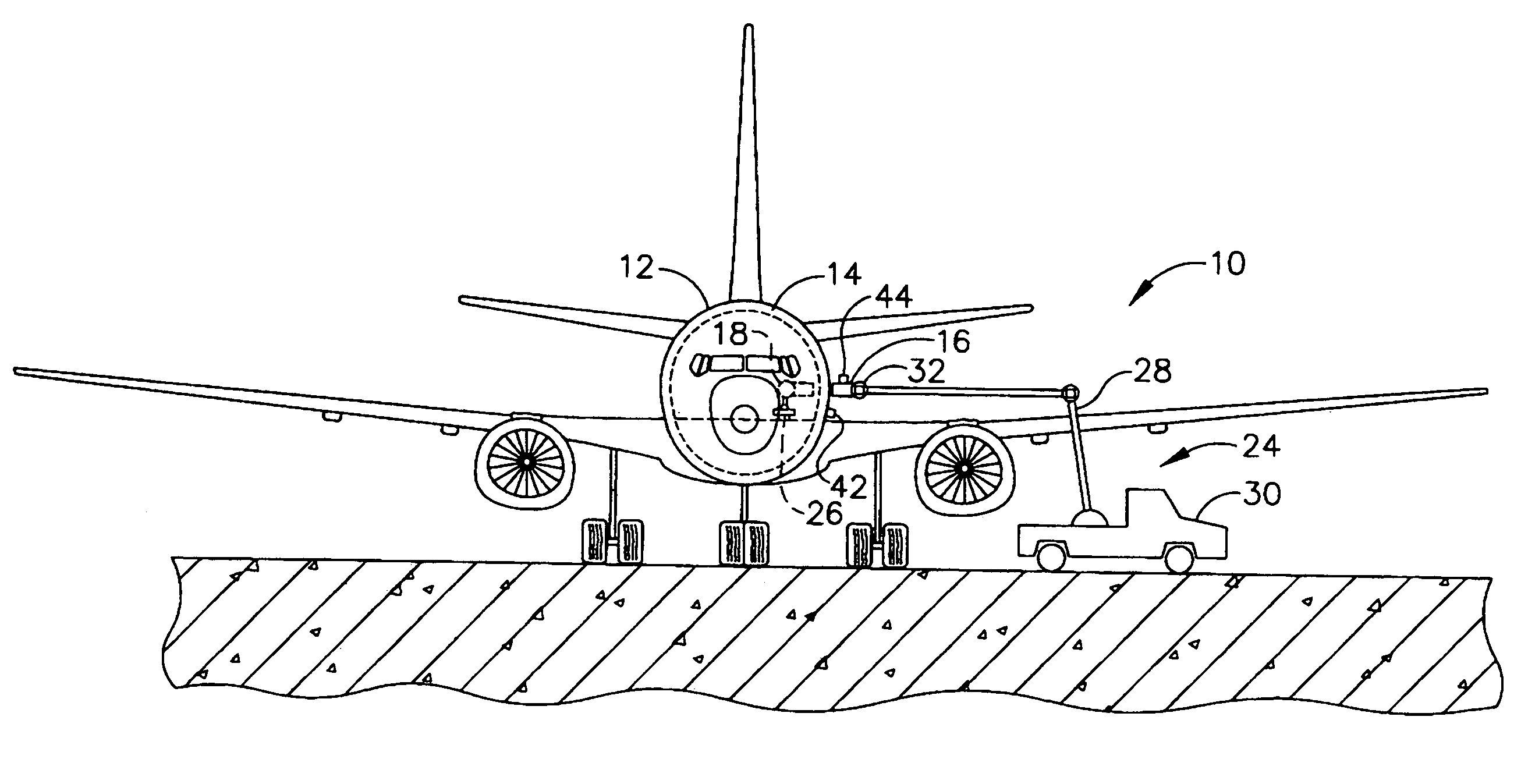Radiographic inspection of airframes and other large objects
a large object and radiographic technology, applied in the field of radiographic inspection, can solve the problems of blurred images, reduced ability to discern defects, and difficulty in positioning the detector in contact with the inspected structur
- Summary
- Abstract
- Description
- Claims
- Application Information
AI Technical Summary
Benefits of technology
Problems solved by technology
Method used
Image
Examples
Embodiment Construction
[0013]Referring to the drawings wherein identical reference numerals denote the same elements throughout the various views, FIG. 1 illustrates schematically a radiographic inspection system 10 for inspecting an aircraft fuselage 12. The fuselage 12 generally comprises a cylindrical wall 14 made up of a grid of circumferential frame members and longitudinal stringers covered by a skin of lightweight sheet metal. The inspection system 10 may be used with other types of structures as well. The inspection system 10 includes a radiation source 16 located on a first side of the fuselage wall 14 and a radiation detector 18 located on a second, opposite side of the fuselage wall 14. The radiation source 16 and radiation detectors 18 are relatively situated on opposite sides of the wall 14 so that radiation emitted by the radiation source 16 irradiates the fuselage wall 14 and then impinges on the radiation detector 18. As depicted in FIG. 1, the radiation source 16 is located outside of the...
PUM
 Login to View More
Login to View More Abstract
Description
Claims
Application Information
 Login to View More
Login to View More - R&D
- Intellectual Property
- Life Sciences
- Materials
- Tech Scout
- Unparalleled Data Quality
- Higher Quality Content
- 60% Fewer Hallucinations
Browse by: Latest US Patents, China's latest patents, Technical Efficacy Thesaurus, Application Domain, Technology Topic, Popular Technical Reports.
© 2025 PatSnap. All rights reserved.Legal|Privacy policy|Modern Slavery Act Transparency Statement|Sitemap|About US| Contact US: help@patsnap.com



